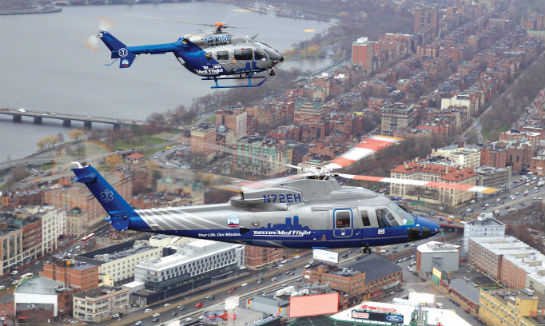
Boston MedFlight knows a thing or two about cooperation. In fact, it was founded on it.
More than 30 years ago, six competing hospitals in Boston, Massachusetts, came together to create a single helicopter air ambulance service for the local area. The service was set up as a 501(c)(3) nonprofit charity, with the goal of putting patients’ needs first.
It was an unusual approach that has proven to be remarkably effective. From a single helicopter, the service has grown to encompass three bases, four helicopters, one fixed-wing aircraft, and five ground critical care ambulances. Three decades and 60,000 patients after its founding, Boston MedFlight is still going strong, excelling in its mission “to provide the right vehicle to the right patient at the right time and transport them to the right facility.”
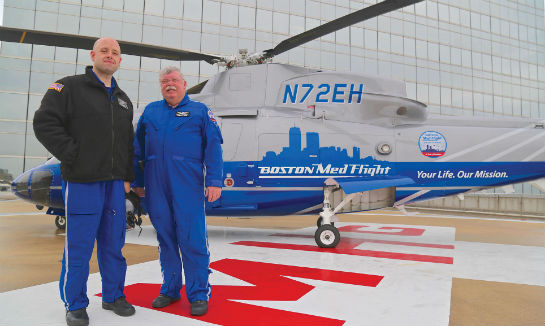
And its cooperative achievements go well beyond those of its member hospitals. As a founding member of the North East Air Alliance (NEAA), MedFlight has collaborated with other air ambulance providers throughout the northeastern United States to share resources and information, creating a regional air ambulance network focused on safety and patient care.
Over the past five years, it has achieved an even greater feat of cooperation, working with the Federal Aviation Administration (FAA) and Logan International Airport Air Traffic Control to implement the first helicopter instrument approaches into downtown Boston hospitals. When a helicopter is on an approach, even landing Boeing 747s may have to wait their turn — no simple thing to coordinate at one of the nation’s busiest urban airports.
Boston MedFlight’s hospital consortium model has always been unique, and not necessarily transferable to other markets. Nevertheless, its enduring success is a testament to the power of cooperative action. In an air medical industry that has increasingly been characterized by cutthroat competition, it’s also a striking example of what is possible in a critical care transport system that puts safety and patient care ahead of profits.
Doing it ‘right’
Boston MedFlight was founded in 1984 by the same six hospitals that oversee its operations today: Beth Israel Deaconess Medical Center, Boston Medical Center, Boston Children’s Hospital, Tufts Medical Center, Massachusetts General Hospital, and Brigham and Women’s Hospital. It transported its first patient in 1985, using an MBB BK117 helicopter originally based in South Boston.
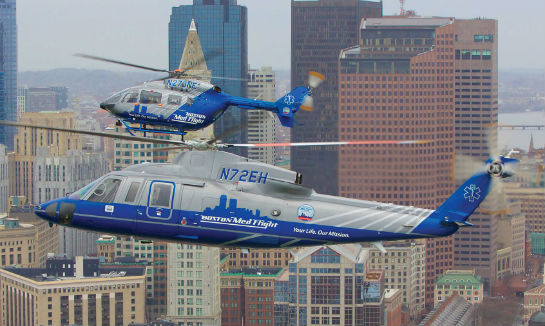
Today, MedFlight’s aircraft fleet includes one Sikorsky S-76C++, two Airbus Helicopters EC145s, a backup BK117, and a Beechcraft King Air 200B, which operate from bases located at Hanscom Field, Plymouth Municipal Airport, and Lawrence Municipal Airport. Its ground critical care ambulances are also distributed between the three bases, and conduct around half of the service’s approximately 3,500 patient transports per year, freeing up the aircraft for only the most time-sensitive critical patients.
The evolution of Boston MedFlight — from a single helicopter air ambulance to a comprehensive critical care transport system — can be seen as a fulfillment of its mandate to do “right” by its patients, providing them with the right vehicle at the right time for transport to the right facility. The execution of that mandate begins in its sophisticated communications center, which is staffed 24/7 by knowledgeable specialists who have clinical experience in emergency medicine.
When a call comes in, that team jumps into action, determining which asset to assign to the call, and coordinating with sending and receiving medical facilities to ensure the patient receives appropriate care. “The average call for us [requires] anywhere from six to 10 phone calls,” remarked communications specialist Elizabeth Conley. “When we get into the specialty missions, we’re conferencing physician-to-physician . . . Those can get quite complicated.”

For any given call, the determination of the “right vehicle” may depend on a number of factors, including patient acuity, distance of transport, and weather. Generally speaking, MedFlight reserves its helicopters for cases in which speed and directness of transport are paramount. Ground vehicles are often preferred for shorter transports and non-time-sensitive patients, although they also allow MedFlight to remain operational when the weather is too bad to fly. The King Air is used for longer-distance transports, including some flights from Martha’s Vineyard and Nantucket.
Beyond selecting the appropriate mode of transportation, however, MedFlight has always been focused on ensuring that its vehicles meet the “right” standards for safety and patient care. All of its vehicles are equipped with identical medical equipment, including video and surgical airway devices; a critical care monitor; full-function invasive and noninvasive ventilator; nitric oxide and helium/oxygen delivery; cardiac bypass support (ECMO); transport isolette and ventilator; and more. This standardization ensures that medical crews — who consist of a flight nurse and flight paramedic — can transfer between vehicles and work efficiently, without having to think about where everything is.
According to flight paramedic Matt Libby, this standardization extends to MedFlight’s in-house medical simulation lab, where “even the tactile feel that you’re getting is the same.” MedFlight’s medical simulation exercises, which can be exceptionally elaborate, are only one of the ways in which the program keeps its clinicians sharp; crewmembers must also complete annual rotations in other facilities, and take part in regular case reviews and topic presentations at staff meetings. The emphasis on training is critical, Libby said, because “We get to take care of the sickest of the sick. . . . Every call could be the hardest call of your career.”
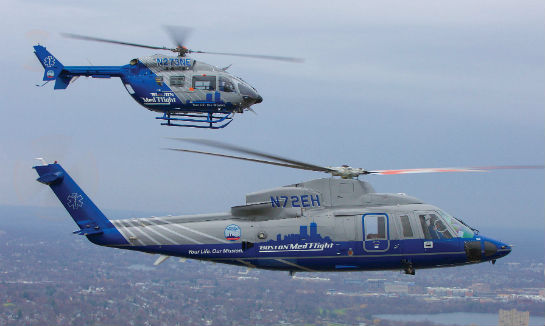
The organization’s aviation operations exemplify the same level of commitment to quality equipment and training. MedFlight has flown twin-engine helicopters from day one, has had instrument flight rules (IFR) capability since 1991, and has been using night vision goggles (NVGs) since 2006. These investments haven’t been cheap, but the organization believes that they’ve paid for themselves many times over. For example, the program has had three one-engine-inoperative events over the years, but “they were pretty much nonevents,” said Richard Ruff, director of operations. “We believe strongly that two engines are safer.”
One of the Boston MedFlight pilots who has experienced an engine failure is pilot Lynda Colarossi, who was lifting out of a hospital helipad on a hot day in the S-76 when one engine failed catastrophically. With a nurse, paramedic, trainee, and one very sick patient on board, she was able to set the aircraft safely back on the helipad. Colarossi came to MedFlight following a diverse civilian career, so she’s no stranger to single-engine operations. “I flew thousands of hours single-engine,” she said, “but I would not choose to do this job single-engine.”
At the same time, Colarossi pointed out that her training was as vital to the positive outcome as her equipment. “The training that MedFlight has invested in me, from my perspective, it made all the difference in the world,” she said. And MedFlight does invest a tremendous amount of money in training its pilots. Not only do all pilots complete initial aircraft training at the factory, they undergo simulator training twice a year with FlightSafety or other providers.

“From very early on, we were sending our pilots to simulator training,” said MedFlight chief operations manager Charlie Blathras. “That line item for FlightSafety is always there, and we always look at it, but protect it.”
A culture of collaboration
Investing in quality equipment and training is one of the ways in which Boston MedFlight’s leadership has demonstrated its commitment to safety. However, Todd Denison, MedFlight’s safety and risk manager, emphasized that the organization’s highly developed safety culture goes well beyond any single individual or action. “Safety is a value and not a priority, so it doesn’t change,” he said. “There’s an expectation that it’s everyone’s job to reduce risk. . . . That piece is a culture piece, and it has developed over 30 years.”
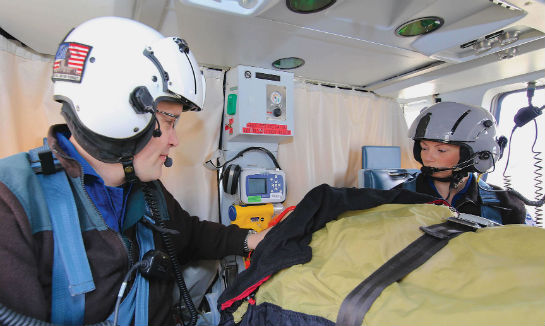
Although MedFlight has been consistent in valuing safety over the years, its safety program is by no means static. In his role as safety and risk manager, Denison said he’s constantly looking to incorporate new ideas from team members as well as industry best practices. One of MedFlight’s innovations has been the MedFlight Information Sharing System (MISS), a web-based adverse events reporting and tracking tool that MedFlight developed in house. In 2013, American Eurocopter (now Airbus Helicopters, Inc.) recognized MedFlight with its Vision Zero Aviation Safety Award, which came with a $10,000 cash prize that was used for further development of the system.
Denison identified a “culture of collaboration” within MedFlight that has also facilitated partnerships with outside organizations, including the other members of the North East Air Alliance. “It’s easier for us to reach outside and work collaboratively because we started it inside,” he said.
Most NEAA members — which also include Life Star in Hartford, UMass Memorial LifeFlight, SkyHealth, LifeFlight of Maine, Dartmouth-Hitchcock Advanced Response Team (DHART), and LifeNet of New York — share real-time flight-tracking information with each other using the software solution FleetEyes, and pilots report to the appropriate communications center when entering another program’s coverage area. This helps prevent potential traffic conflicts, in addition to providing communications specialists with valuable information about aircraft locations and availability, so that the closest asset can be assigned to each patient.
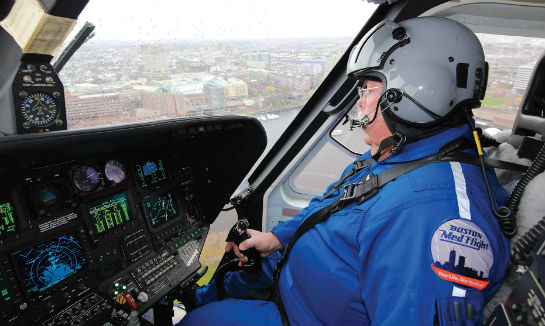
NEAA members also conduct monthly phone calls and quarterly in-person meetings to share ideas and concerns, and collaborate on best practices. “If we have a great idea, I’ll take ‘MedFlight’ off the heading and share it with them,” Denison said. “That’s why NEAA has been such a success — it’s the norm [to share ideas], not the exception.”
MedFlight’s long history of working collaboratively with outside organizations came in handy when it began the process of developing GPS instrument approaches into downtown Boston hospitals in 2010. Although MedFlight had been operating IFR for years, the lack of hospital approaches prevented it from taking full advantage of the capability. Yet downtown Boston’s proximity to Logan International Airport, and the numerous obstacles in this densely packed metropolitan area, made developing approaches a daunting task.
“When I was first contacted, what I told them was I didn’t know if it could be done,” said Steve Hickok of Hickok and Associates, who designed the instrument procedures. “I was dealing with a very difficult airspace environment and significant obstacles at the same time.”
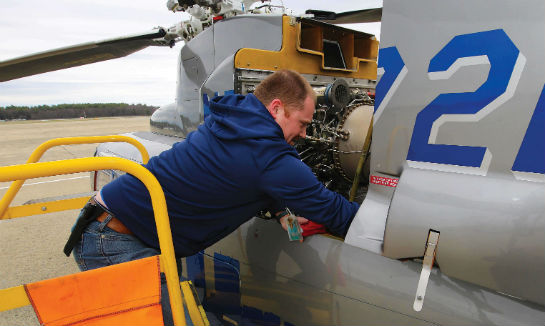
Fortunately, Logan Air Traffic Control was exceptionally cooperative, and willing to concede the extra slice of airspace Hickok needed in order to design procedures that complied with all regulatory requirements. But the complex design process was lengthy, and securing categorical exclusion from an environmental impact study took nearly a year due to the patchwork of requirements in surrounding municipalities. Then, after the procedures themselves were approved in 2013, it took two more years to develop a letter of agreement spelling out exactly how the procedures would be used so as to minimize the impact on commercial traffic.
“If we’re going to be flying a GPS approach into a hospital, they’re essentially holding all traffic at Logan,” said Blathras. “[ATC has] done a phenomenal amount of work to make this work for us.”
On Nov. 19, 2015, Boston MedFlight completed the first operational use of the procedures, safely transporting a critically ill child to the Brigham and Women’s Hospital helipad. In March of this year, Helicopter Association International recognized the hard work that went into that milestone when it presented the BLR Aerospace Safety Award to the “Boston Area Helicopter IFR Infrastructure Team,” consisting of MedFlight, Hickok and Associates, FAA Boston Consolidated TRACON, and FAA Control Tower Boston Logan International Airport. As Blathras described it, “It’s a real private industry/government success story.”
Looking to the future
Recently, most of MedFlight’s organizational attention has been focused on a new undertaking: the transition to its own Federal Aviation Regulations part 135 operating certificate after three decades of contracting for aviation services (most recently with Era Air Medical). It’s a big leap, but Blathras said that MedFlight has been methodically laying the groundwork for the transition for more than a decade. “We’ve been talking about this internally since at least 2002,” he said. “We felt like we had a lot of the right raw talent here to deal directly with the OEMs and vendors.”

Although the name on the operating certificate is changing, most aspects of MedFlight’s aviation operations are not. Director of operations Richard Ruff, pilot Lynda Colarossi, and director of maintenance Edward Jerin are all long-time MedFlight employees, and most of the line pilots and mechanics are also sticking around. “The day-to-day operations, I don’t see that changing,” said Colarossi. On the maintenance side of the house, said Jerin, “I have the same personnel, I have the same focus.”
However, MedFlight is taking advantage of the transition to implement some new initiatives. Ruff said that MedFlight is currently working with the German company heliEFB on an electronic flight bag solution, and with Digital AirWare to integrate that into comprehensive maintenance tracking software. Jerin is also using the opportunity to introduce Snap-on tool control systems. Meanwhile, the organization continues to make progress on previously launched initiatives, including expanding its IFR network by developing GPS instrument procedures for outlying hospitals.
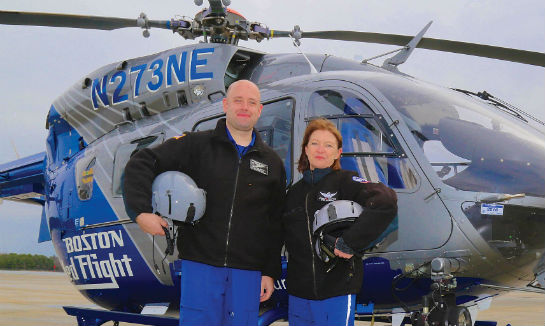
MedFlight is also evaluating options for a new helicopter fleet, as managing checkrides, currency, and maintenance for three different models can be expensive and inefficient. Even though MedFlight only acquired its EC145s in the past few years, Blathras said those aircraft “were always meant as a bridge” on the way to a fleet that ticks all of the right boxes for speed, range, and IFR capability. However, “identifying that model is a challenge for us,” he said. At press time, MedFlight was still looking for the “right vehicle” to carry its operations into the future.
Whatever form those operations take in the future, it seems likely they will exemplify the same spirit of collaboration and commitment to excellence that have guided the organization thus far. “There’s a phenomenal amount of support from our consortium,” said Blathras. “And we’re always looking for opportunities to expand our service.”
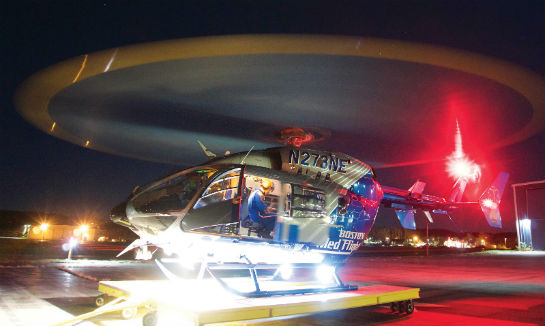





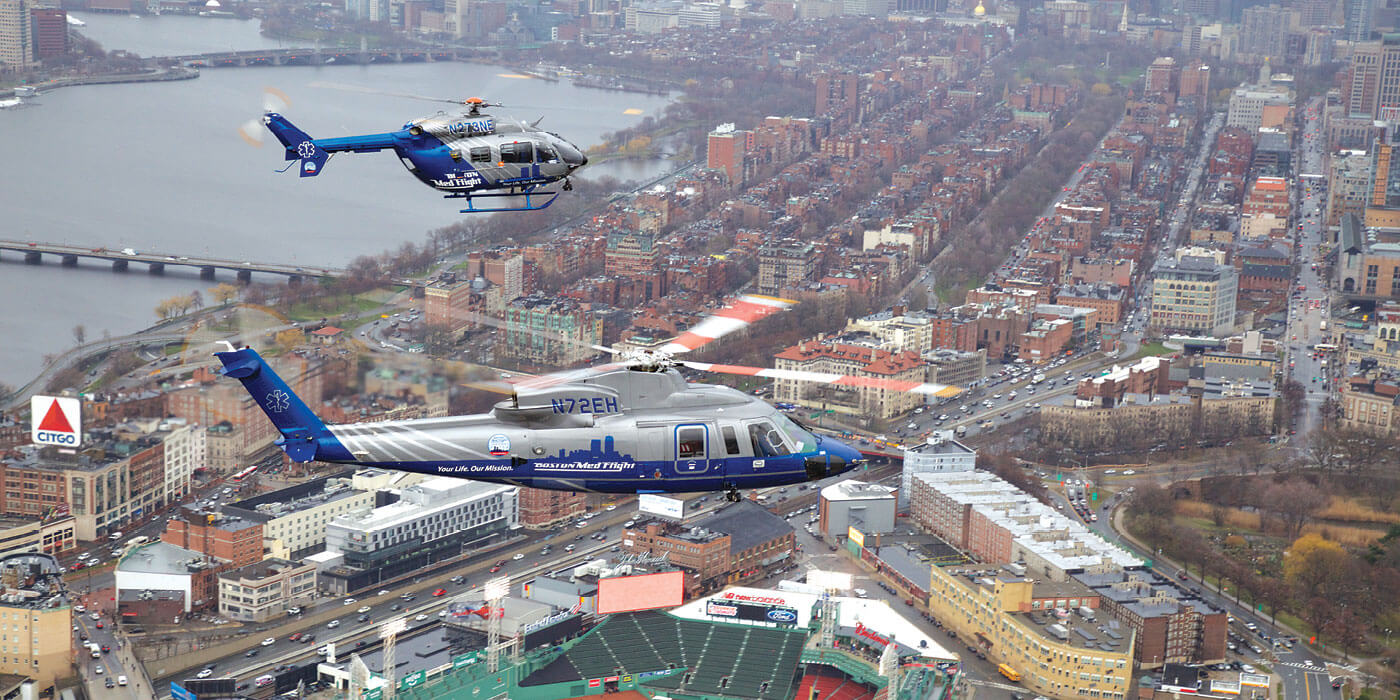
I would like to print this article without the advertisements. Would you be able to end me a copy by email?